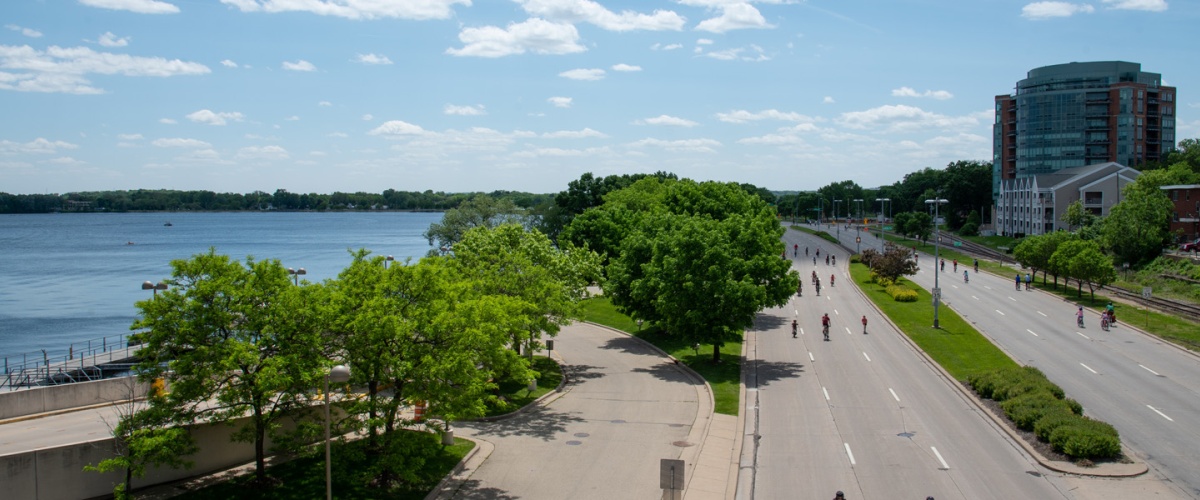Metro Ridership Surges Past 1 Million Rides for October
Archived News Release
This news release is archived and might not be accurate anymore.
For the first time since the onset of the Covid-19 pandemic, Metro has provided more than 1 million rides in a single month. In October, Metro provided 1,075,549 rides, an almost 20% increase compared to October of last year. This is the highest monthly ridership since February of 2020.
“In the past few months, Metro’s ridership has increased significantly, exceeding our expectations and indicating that the Network Redesign is having the intended effect.” said Metro Transit General Manager Justin Stuehrenberg. “We’re proud we can provide improved service to so many people in Madison.”
Comparing to last year, Metro no longer provides service to Madison Metropolitan School District middle schools. Removing that ridership from the monthly tally for an apples-to-apples comparison, Metro is up even more; 26% on its mainline service.
“We’re seeing more people choose Metro for their transportation needs and that’s a good thing. As our community grows and we continue to see the impact of climate change, quality public transportation becomes even more vital for our community.” Said Mayor Satya Rhodes-Conway.
In addition, newly redesigned routes are longer and stretch from one end of the service area to the other. This means passengers need to transfer less often. Metro’s old system centered around transfer points, with most riders traveling across town would need to transfer to a different bus. This would count as two rides, when the same trip now counts as a single ride.
Based on preliminary transfer data over the past few months[1], it appears that the number of transfers has decreased - meaning that while the number of rides on mainline services is up 26%, the actual increase in people appears to be even higher.
This is great news for the future of transit in the community and a sign that Metro’s new system of routes is attractive to riders. However, in the short-term this increased demand has overwhelmed our expectations and made it extremely challenging to accommodate.
Another factor is that Metro’s Network Redesign allocated more service during the mid-day, evenings, and weekends in order to improve service to those working non-traditional hours in often low-paid work. This has been successful in that ridership during those time periods have already matched 2019 levels. However, by spreading this service more across the day, there is slightly less service during peak hours. While “9-to-5” commuters have continued to work remotely at a much higher rate than before the pandemic, the demand for peak hour service is still very strong. This has caused buses to be overcrowded and run behind schedule.
[1] From January 2019 through June 2023, before and after COVID, the ratio of monthly pass revenue to monthly pass boardings was quite consistent. However, for the 3rd quarter of 2023, monthly pass revenue went up 22% compared to the year before, but individual boardings only went up 2%. This indicates a substantial shift in transfer behaviors that may indicate a larger increase in the number of people using the system than indicated directly by the boardings. However, this is just one fare category, so we can’t yet say that effect is equal across the other fare types.
Metro staff have been continuously working on finding solutions to ease overcrowding and get buses back on schedule. Some solutions have not worked as well as staff had hoped. Other fixes take some time to implement.
Here are a few examples:
- Updated schedules go into effect this Sunday, December 3. New schedules have been created by monitoring how long buses take to get through certain areas of the city during different times of the day. Additional time has been strategically scheduled on a per-trip basis through congested areas such as downtown and in the UW campus area.
- Continuous recruitment of drivers. Metro currently has 27 operators in training and is down to only four full time vacancies. With Metro’s driver training program taking nearly 3 months, steps have been taken to ensure recruitment is continuous and less cumbersome to get the necessary amount of drivers out on the street. These efforts are meant not only cover existing service, but also account for routine staff at attrition such as end-of-year retirements.
- Adjusting extra short-haul routes in high demand areas. Extra service trips will available in app trip planning data and schedule information. Bus LED signs will also be adjusted to make extra trip destinations easier to understand.
- Running larger buses – Starting in summer 2024 and continuing into the BRT opening in fall 2024, Metro will begin the use of longer 60-foot all-electric buses with 50% more capacity. Within a year, these buses will comprise one-third of our fleet.
“Metro staff are extremely excited about this surge in ridership,” Stuehrenberg said. “These current challenges are an indication of the overwhelming success of the Network Redesign in creating a service that people want to use. Staff understand that passengers are experiencing challenges and inconvenience during their trips, and we ask for continued patience and feedback as we work to smooth out these issues.”
“Metro is confident that our incoming staff, schedule adjustments, and Bus Rapid Transit implementation over the next year will put us in a strong position to meet the exploding demand for transit service in Dane County.”
For more information on updated schedules that go into effect this Sunday or to provide feedback, call (608) 266-4466 or email mymetrobus@cityofmadison.com.
Complete information is also available at mymetrobus.com.

